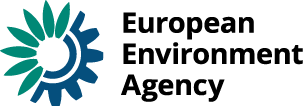Israel

ENI SEIS National Focal Points
| NAME | ORGANISATION | POSITION |
|---|---|---|
Dr (Ms) Orna Matzner |
Israeli Ministry of Environmental Protection (MoEP) |
Head of Science Unit / Chief Scientist Office |
Dr (Mr) Moshe Yanai |
Israeli Central Bureau of Statistics (ICBS) |
Head of agriculture, environment and energy statistics sector |
Key Country data
| Total Area | km² | |
| Population | Million | |
| GDP | Million | |
| GDP Per Capita |
- Events
-
UNEP/MAP CORMON meeting on Pollution 19-21 October 2016 — Marseille, France1st steering Committee meeting ENI SEIS South Support Mechanism project, 7th meeting of the Horizon 2020 Review and Monitoring group 12-14 December 2016 — Athens, Greece Hotel Divani Acropolis, AthensENI SEIS II South Support Mechanism Regional workshop on indicators 17-18 May 2017 — Pilestrœde, 61 – CopenhagenWebinar - Mediterranean Indicators - Industrial emission 19 September 2017 —Webinar - Mediterranean Indicators - Waste 26 September 2017 —Webinar - Mediterranean Indicators - Water 27 September 2017 —2nd ENI-SEIS II South Steering Committee Meeting and 8th meeting of the Horizon 2020 Review and Monitoring (RM) Group 16-18 October 2017 — Hotel H10 Marina Av. Bogatell, 64-68 E-08005-Olympic Village BarcelonaCountry visit to Israel 7-8 March 2018 — Israel2nd ENI SEIS II South Support Mechanism Regional Workshop on Indicators 17-18 April 2018 — Athens1st Regional Workshop on Infrastructure and Data Management 4-5 October 2018 — Rome, ItalyENI SEIS II South InCountry support Israel - Study Tour on waste monitoring - 8-11 October 2018 – Vienna, Austria 8-10 October 2018 — Vienna, Austria3rd ENI SEIS II South Steering Committee and 9th Horizon 2020 Review and Monitoring group meeting 6-7 November 2018 — Vienna, AustriaIsrael National workshop on waste prevention 11-12 December 2018 — Jerusalem, IsraelIsrael national workshop on marine litter 18 December 2018 — Rmat Efal, IsraelRegional Meeting on Reporting of Releases to Marine and Coastal Environment from Land-Based Sources and Activities and Related Indicators 19-20 March 2019 — TIRANA, ALBANIARegional Meeting on Reporting of Releases to Marine and Coastal Environment from Land-Based Sources and Activities and Related Indicators 19-20 March 2019 — Tirana, AlbaniaUN environment MAP 3rd State of the Environment and Development Steering Committee 29 March 2019 — Marseille, FranceUN Environment MAP Cormon meeting on pollution 3 April 2019 — Podgorica, MontenegroENI SEIS II South Regional meeting on waste and Marine Litter and UN environment /MAP Ecosystem Approach Correspondence Group on Pollution and Marine Litter 4-5 April 2019 — Podgorica, MontenegroPlan Bleu Focal Points meeting and SoED 2019 workshop 27-29 May 2019 — Marseilles, FranceUNeMAP - 2nd meeting of Experts on six Pollution Reduction Regional Plans 28 May 2019 — Istanbul, TurkeyMeeting of MED POL Focal Points 29-31 May 2019 — Istanbul, Turkey18th Meeting of the Mediterranean Commission on Sustainable Development (MCSD) 11-13 June 2019 — Budva, MontenegroSummit of the Two Shores 24 June 2019 — Marseilles, FranceENIS Regional Water workshop 9-10 July 2019 — Marseilles, FranceFirst webinar on Data Management and Infrastructure 6 September 2019 —MAP Focal Points meeting 10-13 September 2019 — Athens, Greece10th meeting of the Horizon 2020 Review and Monitoring Group 23-24 September 2019 — AthensH2020 Steering Group meeting 25 September 2019 — TBC1st Steering Committee meeting of the new Water Environment Support (WES) project 26-27 September 2019 — TBC21th COP Barcelona Convention 2-5 December 2019 — Naples, ItalyISRAEL - Webinar SEIS implementation 9 July 2020 —ENI SEIS II South online Closing Event, 21 September 2020 21 September 2020 —
- Country news
Solid waste Indicators
| Municipal solid waste generation | 1000 tons/ year | 4897.5 / 2012 |
| Municipal solid waste generation per capita | kg/year | |
| Solid waste collected (%) in Urban areas | % | |
| Solid waste collected (%) in Rural areas | % |
Indicator 1 & 2 MUNICIPAL WASTE GENERATION – WITH ADDITIONAL INFORMATION ON MUNICIPAL WASTE COMPOSITION
COLLECTED AND TREATED MUNICIPAL WASTE – WITH ADDITIONAL INFORMATION ON NUMBER, TYPE AND LOCATION OF LANDFILLS
Definition of the indicator
The amount of collected municipal waste and collection rate are used to calculate the amount of generated municipal waste expressed in kg per capita per year. The “Municipal waste” refers to waste collected by or on behalf of municipalities; the main part originates from households, but similar wastes from commerce and trade, office buildings, institutions and small businesses is also included. The measure of the proportion of waste collected which is recycled, composted, incinerated, or landfilled in controlled sites gives an indication of the environmental impact of waste management in a country/region.
Availability of datasets for indicator calculation
| Availability of datasets for indicator calculation | |
| Which datasets |
municipal waste by municipality; |
| Time series available |
2000 - 2016 |
Governance for data collection
| Administrative level collecting data | Central administration |
| Frequency | Annually, except for composition data (every 5 years) |
| Name of the department responsible |
ICBS- Agriculture, Environement and Energy Sector |
| Name of the data provider |
Municipal waste by municipality- Municipalities, Transition stations, landfills |
| Methods for data collection | Reports and surveys |
| Master plan for municipal waste management | |
| Quality process |
Data management
| Information system | Datasets are part of SDI | Thematic database | Electronic spreadsheet | No management system of data |
| Spatial resolution | Aggregated at national level | At coastal region | At coastal city | At hydrological basin |
Data policy
| Csv | Excel | Xml | Word | Html | Access database, Mysql, Postgresql | Shapefile | Other | |
| Publicly availability | ||||||||
| How to access from outside | external network (web services or API) | File transfert (FTP) | Other | |||||
Data reporting
| Is the dataset is relevant for reporting obligations | Plan Bleu | Medpol | NAP | UNSD | Other |
| OECD, EUROSTAT |
Wastewater Indicators
| Population with access to improved sanitation systems | % | 98.3 (2012) |
| WW volume collected | million m3/ year | 491.5 (2012) |
| WW Volume treated | million m3/ year | 487 (2012) |
Indicator 3 : Access to Sanitation
The indicator refers to the percentage of the population with access to facilities which hygienically separate human excreta from human, animal and insect contact. The improved sanitation systems are those installed in homes or in the immediate vicinity, for the evacuation of human feces (public sanitation network, septic tank, etc.). The definition of “improved sanitation system” provided by the Joint Monitoring Programme for Water Supply and Sanitation by the World Health Organization and UNICEF is: Connection to a public sewer, connection to a septic system, pour-flush latrine, access to a pit latrine, ventilated improved pit latrine.
Definitions
Availability of datasets for indicator calculation
| Availability of datasets for indicator calculation | |
| Why not |
Based on surveys and estimations and accumulated knowledge regarding the existing infrastructure |
Governance for data collection
| Administrative level collecting data | Central administration collects the data (ministry/specific department) |
| Frequency | Annually, Last data refer to 2016 |
| Name of the department responsible |
Water Quality Division, Water Authority |
| Name of the data provider |
Water Quality Division, Water Authority |
| Methodology for data collection | Surveys and estimation |
| Master plan for municipal |
Data management
| Information system | Thematic database | Electronic spreadsheet | No management system of data |
SDI
| Datasets are part of SDI |
Data quality
| Quality process | ||||
| Spatial resolution | Aggregated at national level | At coastal hydrological basin | Rural | Urban |
| Time series available |
1980 - 2016 |
|||
Data policy
| Csv | Excel | Xml | Word | Html | Access database, Mysql, Postgresql | Shapefile | Other | |
| Publicly availability | ||||||||
| How to access from outside | external network (web services or API) | File transfert (FTP) | Other | |||||
Data flows
| Is the dataset is relevant for reporting obligations | Plan Bleu | Medpol | NAP | UNSD | Other |
| OECD, EUROSTAT |
Indicator 4 : Municipal Wastewater Management
The indicator refers to the volume of municipal wastewater collected by public sewage networks, septic systems and cesspits, and the volume of wastewater treated in wastewater treatment plants. Here reference is made to primary (mechanical) treatment that removes part of the suspended solids, and secondary (biological) treatment that uses aerobic or anaerobic micro-organisms to decompose most of the organic matter and retain some of the nutrients (around 20 - 30 %). Tertiary (advanced) treatment removes the organic matter even more efficiently.
Definitions
Availability of datasets for indicator calculation
| Availability of datasets for indicator calculation | |
| Wastewater treatment plants |
Governance for data collection
| Administrative level collecting data | Central administration |
| Frequency | Annually, last data refer to 2016 |
| Name of the department responsible |
Water and Streams Division, MoEP |
| Name of the data provider |
Wastewater treatment plants |
| Methodology for data collection | Reporting and surveys |
| Master plan for municipal |
Data management
| Information system | Thematic database | Electronic spreadsheet | No management system of data |
SDI
| Datasets are part of SDI |
Data quality
| Quality process | ||||
| Spatial resolution | Aggregated at national level | At coastal region | At coastal city | At hydrological |
| Time series available |
1980 - 2016 |
|||
Data policy
| Csv | Excel | Xml | Word | Html | Access database, Mysql, Postgresql | Shapefile | Other | |
| Publicly availability | ||||||||
| How to access from outside | external network (web services or API) | File transfert (FTP) | Other | |||||
Data flows
| Is the dataset is relevant for reporting obligations | Plan Bleu | Medpol | NAP | UNSD | Other |
| OECD, EUROSTAT |
Indicaotr 6: RELEASE OF TOXIC SUBSTANCES AND NUTRIENTS FROM INDUSTRIAL SECTORS
The indicator refers to the emissions from industrial sources and/or from individual facilities within the Mediterranean coastal zone with regard to substances like BOD, COD, Nitrate, Nitrite, Ammonium, Total Phosphorus and Orthophosphates.
Availability of datasets for indicator calculation
| Availability of datasets for indicator calculation | |
| Which one? |
1. Marine monitoring programs are required round discharge outlets. A map with links to all reports can be found at this site: Local%20Monitoring%20Plans/Pages/default.aspx
|
Governance for data collection
| Administrative level collecting data | Central administration collects the data (ministry/specific department) |
| Frequency |
1. Monitoring surveys are conducted twice a year, Autumn and Spring. All raw data and a report are submitted to the Ministry of Environmental Protection.
(once a day, once a week, once a month, once a number of months or once a year) |
| Name of the department responsible |
Marine Environment Protection Division, Israel Ministry of Environmental Protection |
| Name of the data provider |
1.Monitoring surveys - Israel Oceanographic & Limnological Research and other companies |
| Methodology for data collection |
1.Monitoring surveys - all survey materials and Methods are in the marine surveys reports. |
| Master plan for municipal |
|
Do you have ELVs (Effluent Limit Values) for industry on BOD/COD, TP, TN and other toxic substances |
|
| Substances |
BOD, TP, TN, TSS, mineral oil, oil and grease, heavy metals, herbicides |
| Do industrial facilities have to report to central authority about their measured effluents | |
| interval | between 1 to three months |
Data management
| Information system | Thematic database | Electronic spreadsheet | No management system of data | Other |
| PDF reports and excels with raw data |
SDI
| Datasets are part of SDI |
Data quality
| Quality process | |||||
| What type of quality | The lab tests are carried out by accredited laboratories | ||||
| Spatial resolution | Aggregated at national level | At coastal region | Coastal city | Coastal hydrological basin | Other |
| EEZ Region | |||||
| Time series available |
1980 - 2016 |
||||
Data policy
| Csv | Excel | Xml | Word | Html | Access database, Mysql, Postgresql | Shapefile | Other | |
| Publicly availability | ||||||||
| How to access from outside | external network (web services or API) | File transfert (FTP) | Other | |||||
Data flows
| Is the dataset is relevant for reporting obligations | Plan Bleu | Medpol | NAP | UNSD | Other |
| OECD, EUROSTAT |
Indicator 5 : Nutrient concentrations in transitional, coastal and marine waters
The indicator refers to the levels and trends in total nitrogen, total phosphorus concentration in the transitional, coastal and marine waters of the Mediterranean Sea.
Definitions
Availability of datasets for indicator calculation
| Availability of datasets for indicator calculation | |
| Total nitrogen (TN) concentration | |
| Total phosphorus (TP) concentration | |
| Nitrate (NO3) concentration | |
| Nitrite (NO2) concentration | |
| Ammonium (NH4) concentration | |
| Orthophosphate (o-PO4) concentration |
Governance for data collection
| Administrative Level | Central administration |
| Frequency |
Data is collected twice a year, Autumn and Spring. Last update (October 2017) |
| Name of data provider | Israel Oceanographic and Limnologic Institute (IOLR) |
| Methodology |
See the reports for all methodologies: http://www.sviva.gov.il/InfoServices/ReservoirInfo/ ResearchAndPublications/Pages/Publications/P0801-P0900/P0843.aspx |
| Obligation for data reporting (volumes/Perf) to central administration | |
| Master plan for managing the concentration of total nitrogen/phosphorous |
Data management
| Information system | Thematic database | Electronic spreadsheet | No management system of data |
SDI
| Datasets are part of SDI |
Data quality
| Quality process | ||||
| Spatial resolution | Aggregated at national level | At regional level | At sub regional level | At coastal level |
| Time series available |
Data is available on the ISRAMAR database: |
|||
Data policy
| Csv | Excel | Xml | Word | Html | Access database, Mysql, Postgresql | Shapefile | Other | |
| ODV | ||||||||
| Publicly availability | ||||||||
| How to access from outside | external network (web services) | File transfert (FTP) | Other | |||||
Data flows
| Is the dataset is relevant for reporting obligations | Plan Bleu | Medpol | NAP | UNSD | Other |




